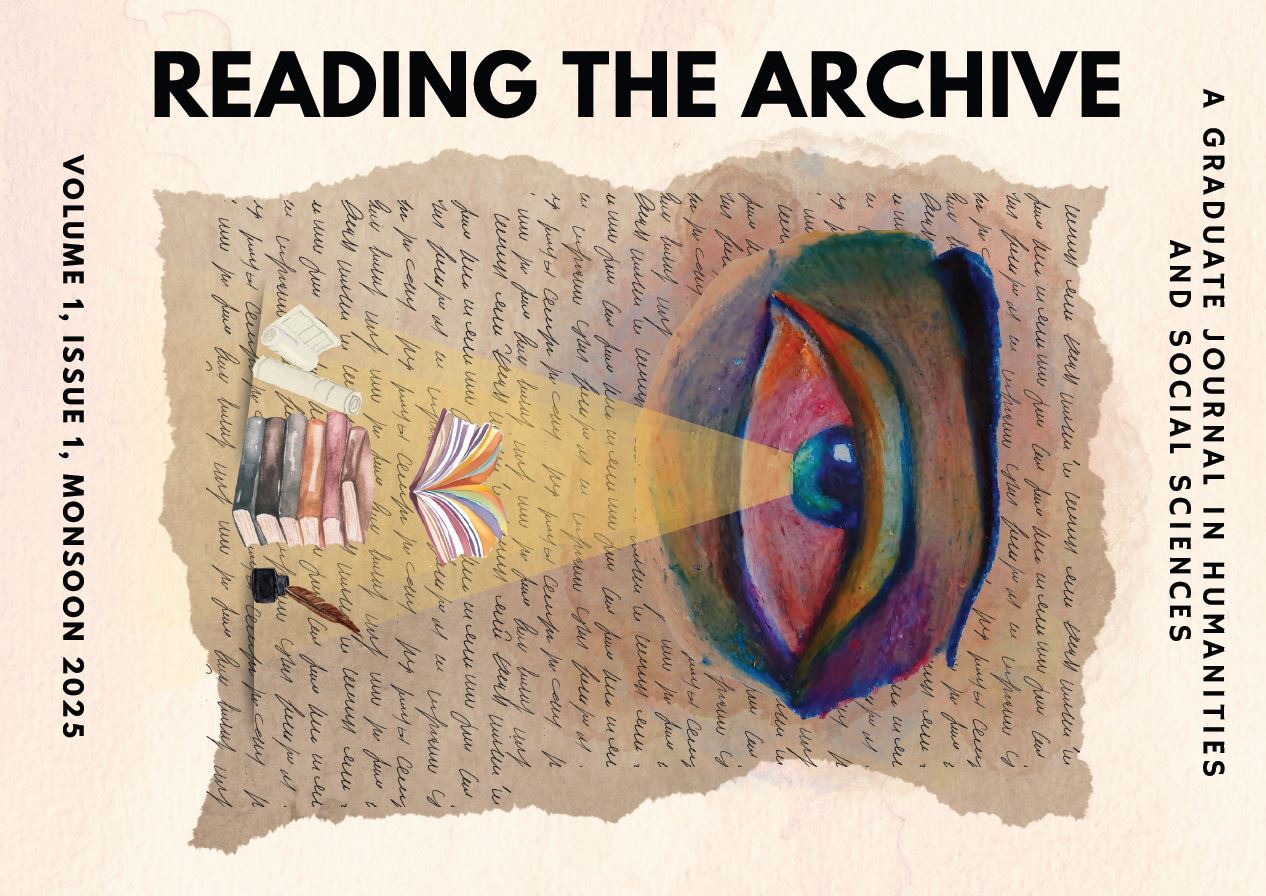Historicizing the Shibsankirtankavya
Conceptualising the Brahmanical Socio-Moral Order of Early Modern Bengal
Keywords:
Shibsankirtankavya, brahmanical order, agrarianisation, gender norms, early modern BengalAbstract
The Shibsankirtankavya is a mangalkavya that is also part of a larger corpus of popular ‘loukik’ (folk) poems composed about the deity Shiva. The kavya doesn’t include an account of any politically relevant contemporary event, which is the primary reason why it has been neglected by historians to a great extent as a source of Bengal’s history. However, it is replete with an in-depth understanding of the contemporary social and economic conditions of the region of Rarh or western Bengal in the early eighteenth century. The descriptions of an intoxicated and beggarly Shiva’s transition into the role of an agrarian householder; the skirmishes within the God’s household, between the spouses (Shiva and Parvati), reflect a very crude description of early modern rural life. Such humanised depictions of the deities highlight the interdependence of the agrarian and fishing economies within the region. Set in the rural backdrop of 18th century Rarh, the primary theme recognized in this paper is that of agrarian expansion, and its consequences on the Brahmanical religion. Apart from official records, contemporary anthropological surveys too serve as a useful source for understanding both the nature and purpose of the verse narrative. The patron of the text, a zamindar, utilises the didactic nature of the performative mangalkavyas to communicate with his subjects, his source of revenue, in prioritising the aim of maximising revenue-extraction and the setting up of a social and moral order that is conducive for the expansion and effective fruition of the agrarian process within the ambit of a Brahmanical socio-moral order.
References
Aquil, Raziuddin, and Tilottama Mukherjee, eds. An Earthly Paradise: Trade, Politics and Culture in Early Modern Bengal. New Delhi: Manohar, 2020.
Aquil, Raziuddin, and Partha Chatterjee, eds. History in Vernacular. New Delhi: Permanent Black, 2008.
Bandyopadhyay, Asit Kumar. Bangla Sahityer Itivrtta. Calcutta: Modern Book Agency, 1981.
Behl, Aditya. Love and Subtle Magic: An Indian Islamic Literary Tradition, 1379–1545. New Delhi: Oxford University Press, 2016.
Bhattacharya, Ashutosh. Bangla Mangal Kabyer Itihas. Kolkata: Modern Book Agency, reprint, 2006.
Chakrabarty, Kunal. Religious Process: The Puranas and the Making of a Regional Tradition. New Delhi: Oxford University Press, 2001.
Chakravarti, Uma. “Conceptualising Brahmanical Patriarchy in Early India: Gender, Caste, Class and State.” Economic and Political Weekly 28, no. 14 (1993): 579–85.
Chattopadhyaya, Brajadulal. The Making of Early Medieval India. New Delhi: Oxford Paperbacks, 1994.
Chatterjee, Kumkum. “The Persianization of ‘Itihasa’: Performance Narratives and Mughal Political Culture in Eighteenth-Century Bengal.” The Journal of Asian Studies 67, no. 2 (2008): [pages if available].
______. The Cultures of History in Early Modern India: Persianization and Mughal Culture in Bengal. Delhi: Oxford University Press, 2009.
______. “Goddess Encounters: Mughals, Monsters and the Goddess in Bengal.” Modern Asian Studies 47, no. 5 (2013): 1435-1487.
Curley, David L. “Maharaja Krishnachandra, Hinduism and Kingship in the Contact Zone of Bengal.” In Rethinking Early Modern India, edited by Richard D. Barnett, 85–117. New Delhi: Manohar, 2002.
______. Poetry and History: Bengali Maṅgal-kābya and Social Change in Precolonial Bengal. New Delhi: Chronicle Books, 2008.
Curley, David L., and Raziuddin Aquil, eds. Literary and Religious Practices in Medieval and Early Modern India. London: Taylor & Francis, 2016.
Datta, Rajat. Society, Economy and the Market: Commercialization in Rural Bengal, 1760–1880. New Delhi: Manohar, 2000.
Sen, Dinesh Chandra. The History of the Bengali Language and Literature. Calcutta: Calcutta University Press, 1911.
Dutt, K.N. “Problems in the History of Assam.” Proceedings of the Indian History Congress 23 (1960): 164–69.
Eaton, Richard M. The Rise of Islam and the Bengal Frontier, 1204–1760. Berkeley: University of California Press, 1993.
Geddes, Arthur. “The Regions of Bengal.” Geography 15, no. 3 (1929): 186–98.
Hubert, Thibaut D’. In the Shade of the Golden Palace: Alaol and Middle Bengali Poetics in Arakan. Oxford: Oxford University Press, 2018.
Kosambi, D.D. Myth and Reality: Studies in the Formation of Indian Culture. Bombay: Popular Prakashan, 1962.
Mukherjee, Tilottama. Political Culture and Economy in Eighteenth-century Bengal: Networks of Exchange, Consumption and Communication. New Delhi: Orient Blackswan, 2013.
______. Purāṇas and Acculturation: A Historico-Anthropological Perspective. New Delhi: Manohar, 2001.
Naumann, Manfred, and Peter Heath. “Literary Production and Reception.” New Literary History 8, no. 1 (1976): 107–26.
Rao, Velcheru Narayana, David Shulman, and Sanjay Subrahmanyam. Textures of Time: Writing History in South India, 1600–1800. New Delhi: Permanent Black, 2003.
Sahu, Bhairabi Prasad. “From Regional Histories to Histories of the Regions and Beyond.” Social Scientist 43, no. 3/4 (2015): 33–47.
Sarkar, Jadunath, ed. The History of Bengal. Vol. II, Muslim Period, 1200–1757. Dacca: The University of Dacca, 1948.
Stewart, Tony K. The Final Word: The Caitanya Caritamrita and the Grammar of Religious Tradition. London: Oxford University Press, 2010.
Thapar, Romila. “Early Indian History and the Legacy of D D Kosambi.” Economic and Political Weekly 43, no. 30 (July 26–August 1, 2008): 43–51.
______. Time as a Metaphor of History: Early India. New Delhi: Oxford University Press, 1996.
______. Cultural Pasts: Essays in Early Indian History. New Delhi: Oxford University Press, 2003.
Downloads
Published
How to Cite
Issue
Section
Categories
License
Copyright (c) 2025 Kajri Raymahasay

This work is licensed under a Creative Commons Attribution-NonCommercial-NoDerivatives 4.0 International License.





